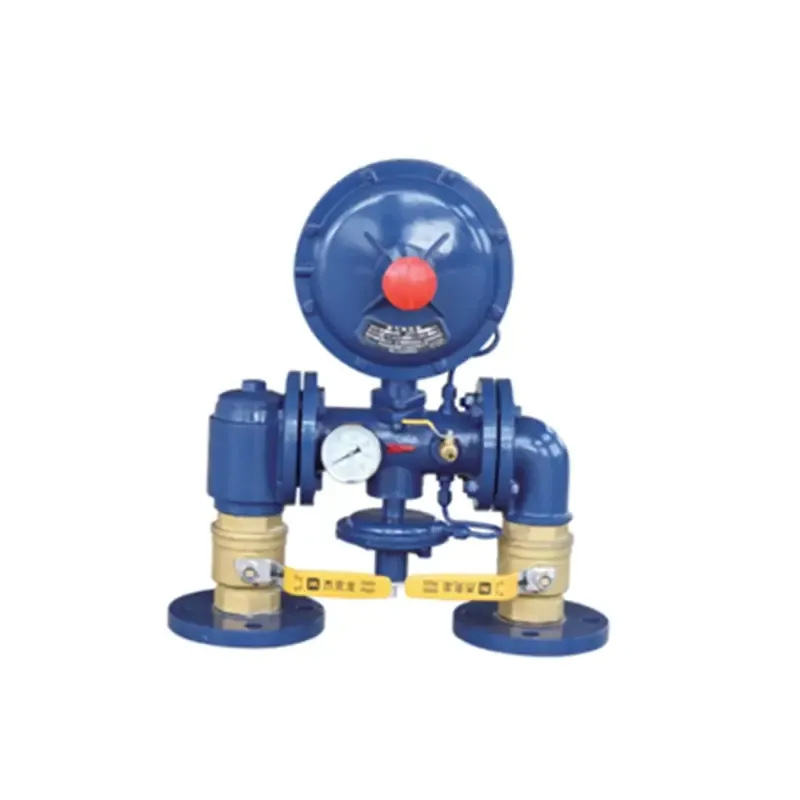
Jul . 29, 2024 05:04
Back to list
Understanding the Importance and Functionality of Pressure Reducing Regulators in Various Applications
Understanding Pressure Reducing Regulators A Comprehensive Overview
Pressure reducing regulators are crucial devices used in various industries to maintain a desired pressure in a system. They play a vital role in ensuring the safety, efficiency, and overall performance of connected equipment. This article explores the function, types, applications, and benefits of pressure reducing regulators.
Function of Pressure Reducing Regulators
The primary function of a pressure reducing regulator is to decrease the incoming higher pressure of a fluid or gas to a lower, manageable output pressure. By maintaining a consistent downstream pressure, regulators prevent potential damage to equipment and ensure optimal performance. In essence, they act as a safeguard against surges and fluctuations in pressure that could adversely affect processes and machinery.
These devices operate using a simple principle they adjust the flow of the inlet medium based on the downstream pressure. When the downstream pressure rises above the setpoint, the regulator will restrict the flow to maintain the desired pressure. Conversely, if the downstream pressure drops, the regulator allows more flow to compensate. This automatic adjustment ensures stable operational conditions.
Types of Pressure Reducing Regulators
There are several types of pressure reducing regulators, each designed for specific applications and operating conditions. The most common types include
1. Spring-Loaded Regulators These use a spring mechanism to maintain pressure. The setpoint is determined by adjusting the spring tension, which responds to upstream or downstream pressure changes.
2. Pneumatic Regulators Often used in larger systems, these regulators utilize compressed air to control pressure levels. They are particularly beneficial in applications requiring precise pressure regulation.
3. Diaphragm Regulators These regulators employ a diaphragm that reacts to pressure changes, offering high accuracy and responsiveness. They are ideal for sensitive applications where pressure stability is critical.
4. Electro-Pneumatic Regulators These advanced regulators combine electronics with pneumatic control, allowing for greater precision and remote operation. They are often used in automated systems.
pressure reducing regulators

Applications of Pressure Reducing Regulators
Pressure reducing regulators find applications across various sectors. In the industrial sector, they are used in manufacturing processes that require consistent gas or liquid pressure, such as chemical processing, oil and gas, and beverage production. In HVAC systems, regulators maintain proper airflow and pressure, leading to improved energy efficiency and comfort.
Additionally, pressure reducing regulators are critical in medical applications, particularly in the delivery of gases for anesthesia and respiratory support
. They ensure that patients receive the correct gas pressure without risking overpressure conditions.Benefits of Using Pressure Reducing Regulators
Incorporating pressure reducing regulators into systems offers numerous advantages
1. Safety By controlling pressure levels, regulators reduce the risk of leaks, explosions, and equipment failure, enhancing overall safety.
2. Efficiency Maintaining optimal pressure enhances the efficiency of processes and equipment, leading to energy savings and reduced operational costs.
3. Longevity of Equipment Consistent pressure reduces wear and tear on machinery, extending its lifespan and minimizing downtime associated with maintenance and repairs.
4. Process Control Regulators allow for greater control over processes, resulting in improved product quality and consistency.
Conclusion
Pressure reducing regulators are essential components in various systems, ensuring safe, efficient, and reliable operations. By understanding their function, types, and applications, industries can select the appropriate regulator to meet their specific needs. As technology advances, the evolution of pressure reducing regulators will continue to enhance performance and reliability, making them indispensable in modern engineering and manufacturing.
Latest news
-
Safety Valve Spring-Loaded Design Overpressure ProtectionNewsJul.25,2025
-
Precision Voltage Regulator AC5 Accuracy Grade PerformanceNewsJul.25,2025
-
Natural Gas Pressure Regulating Skid Industrial Pipeline ApplicationsNewsJul.25,2025
-
Natural Gas Filter Stainless Steel Mesh Element DesignNewsJul.25,2025
-
Gas Pressure Regulator Valve Direct-Acting Spring-Loaded DesignNewsJul.25,2025
-
Decompression Equipment Multi-Stage Heat Exchange System DesignNewsJul.25,2025

